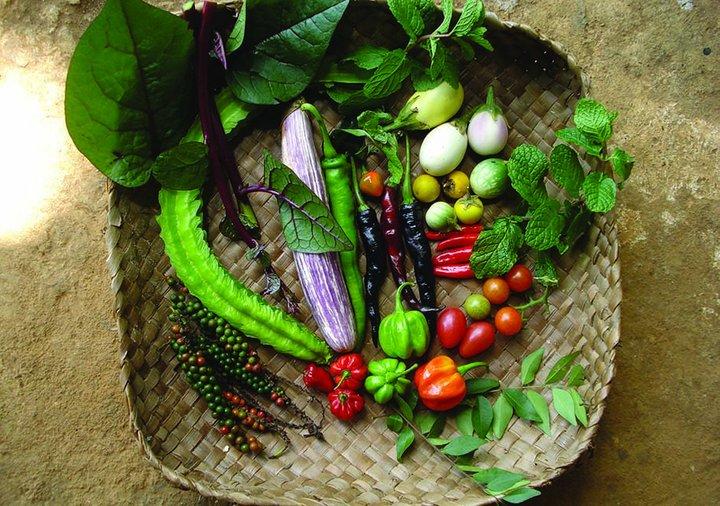Big results from small plots: Home gardens in Nepal

Home gardens play a big role when it comes to improving dietary diversity, bringing in extra income, and improving family well-being through the use and conservation of biodiversity. Read more in this 2013 Annual Report story.
Home gardens play a big role when it comes to improving dietary diversity, bringing in extra income, and improving family well-being through the use and conservation of biodiversity. Often part of a larger farming system, they are usually tended by rural women, who manage to coax from the soil a wide variety of fruits, vegetables, herbs, medicinal plants, flowers, fodder and even building materials. Yet these productive gardens are often overlooked by mainstream policy and agricultural development priorities when assessing the nutritional diversity and livelihood options of poor rural communities.
With support from the Swiss Agency for Development and Cooperation, Bioversity International started a home garden initiative in Nepal in 2002 to study how these small plots contribute to biodiversity, food security, nutrition and household income. Working with Local Initiatives for Biodiversity, Research and Development (LI-BIRD) and other partners such as the Department of Agriculture, we aimed to understand the scientific basis of the management of agricultural biodiversity in home garden ecosystems in Nepal – a true agricultural biodiversity hotspot.
Towards the end of the third phase of the project in 2013, a thorough impact assessment study was conducted in two districts to analyze changes in livelihood, nutrition and homestead biodiversity, both in participating homes and control groups.
Thanks to the project interventions, home gardeners saw their yields nearly triple from 300kg per year to as much as 900kg per year in some households. More households were selling their garden products as well. Biodiversity increased in the home gardens of participating households, with 66 species under cultivation as compared to fewer than 40 species before the project began. Farmers now maintain higher plant diversity on farms and cultivate a greater range of plant groups – vegetables, fruits, spices, medicinal herbs, fodder and ornamentals – and a larger variety of different vegetables. Participating households doubled their overall consumption of produce, including the amount of green leafy vegetables, and have increased their intake of vitamin A-rich foods like mango and papaya by 36%.
After the successful scaling up of the project in 16 districts with our partners – the Center for Environmental and Agricultural Policy Research, Extension and Development; Tuki Association Sunkoshi; Rural Development Tuki Association, Dolakha and Group of Helping Hands (SAHAS) Nepal – the Government of Nepal is now planning to mainstream the home garden initiative in 20 districts as part of its efforts towards achieving the Millennium Development Goals. LI-BIRD has integrated home gardening in all its projects to contribute to women’s empowerment and family well-being.
This story was taken from the Annual Report 2013
